-
main-collection-product-grid
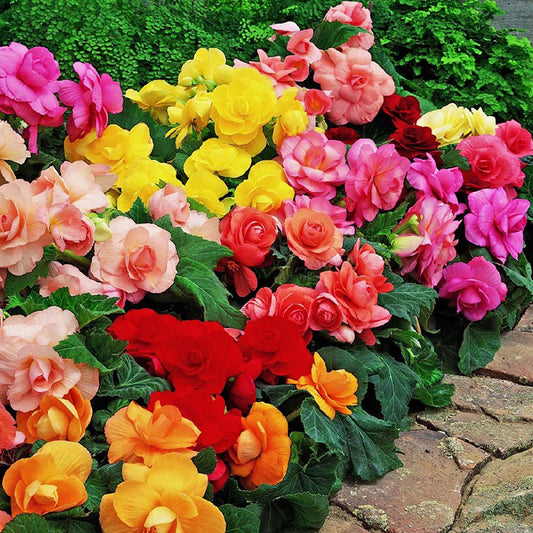
Begonia Tubers - Roseform Mix
Low-maintenance rose-petaled flowers boasting a rainbow of colorOut of StockBegonia Tubers - Roseform Mix
Low-maintenance rose-petaled flowers boasting a rainbow of colorRegular price As Low As $22.99Regular priceUnit price per -
main-collection-product-grid
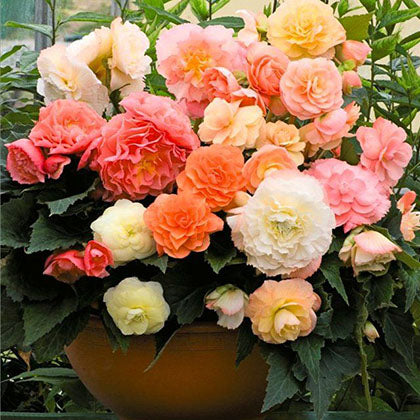
Begonia Tubers - Roseform Pastel Mix
Fully double-petaled flowers in the hottest colors of the seasonOut of StockBegonia Tubers - Roseform Pastel Mix
Fully double-petaled flowers in the hottest colors of the seasonRegular price As Low As $25.99Regular priceUnit price per -
main-collection-product-grid
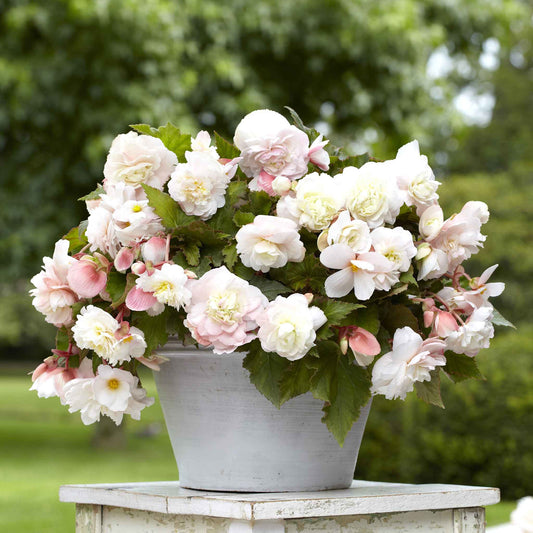
Begonia Tubers - Angelique
Sweet fragrance not always found in begoniasOut of StockBegonia Tubers - Angelique
Sweet fragrance not always found in begoniasRegular price As Low As $17.99Regular priceUnit price per -
main-collection-product-grid

Begonia Tubers (Roseform) - Apricot
Fool your neighbors with this sweet-smelling rose lookalikeBegonia Tubers (Roseform) - Apricot
Fool your neighbors with this sweet-smelling rose lookalikeRegular price As Low As $15.99Regular priceUnit price per -
main-collection-product-grid

Begonia Tubers - Hanging Basket Pastel Mix
Supple-stemmed begonias in subtle pastel huesBegonia Tubers - Hanging Basket Pastel Mix
Supple-stemmed begonias in subtle pastel huesRegular price As Low As $25.99Regular priceUnit price per -
main-collection-product-grid
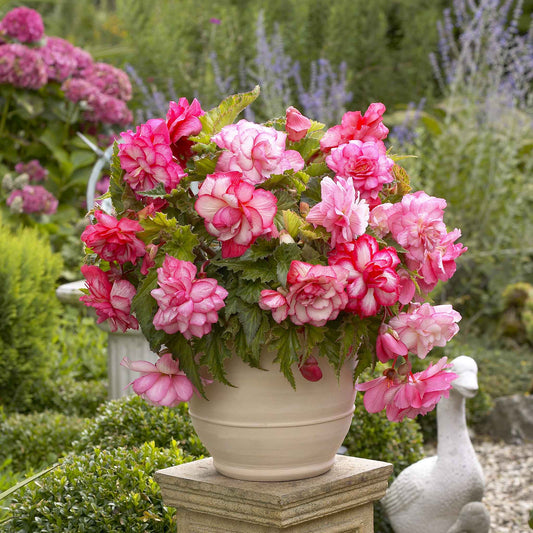
Begonia Tubers - Pink Balcony
Trailing habit perfect for baskets and windowsillsOut of StockBegonia Tubers - Pink Balcony
Trailing habit perfect for baskets and windowsillsRegular price As Low As $17.99Regular priceUnit price per -
main-collection-product-grid
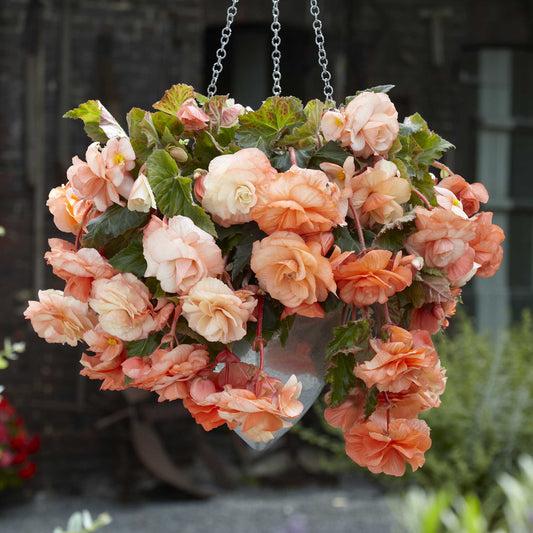
Begonia Tubers - Splendide Apricot
Cascading habitBegonia Tubers - Splendide Apricot
Cascading habitRegular price As Low As $17.99Regular priceUnit price per -
main-collection-product-grid
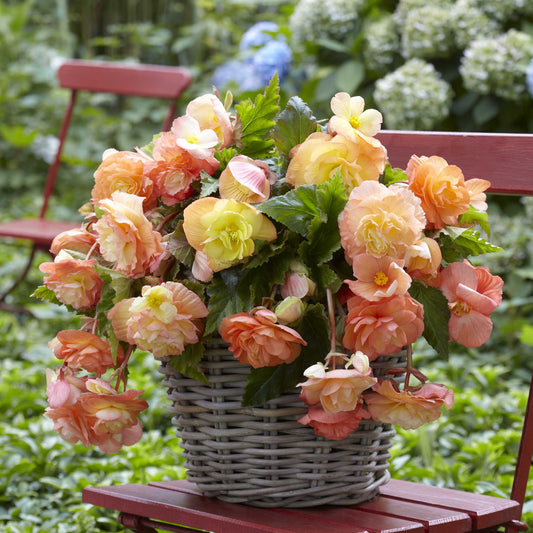
Begonia Tubers - Splendide Ballerina
Massive bloom sizeBegonia Tubers - Splendide Ballerina
Massive bloom sizeRegular price As Low As $17.99Regular priceUnit price per -
main-collection-product-grid
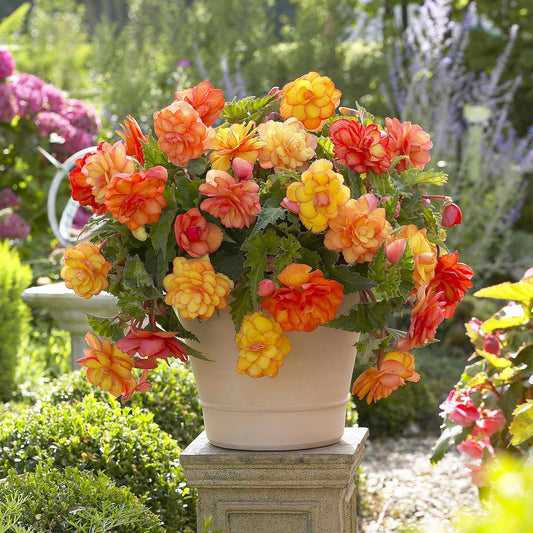
Begonia Tubers - Golden Balcony
Full, double rounded petals in fiery hot shadesBegonia Tubers - Golden Balcony
Full, double rounded petals in fiery hot shadesRegular price As Low As $17.99Regular priceUnit price per -
main-collection-product-grid
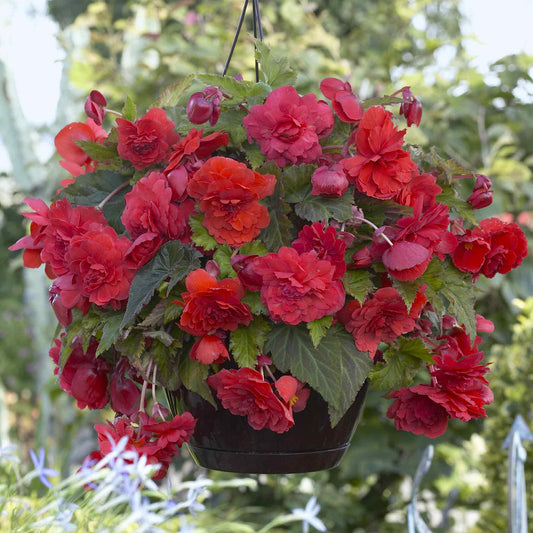
Begonia Tubers - Odorata Red Glory
Delightful, fragrant, and colorful red flowers that are ideal for containersBegonia Tubers - Odorata Red Glory
Delightful, fragrant, and colorful red flowers that are ideal for containersRegular price As Low As $17.99Regular priceUnit price per
About our begonias
- 10 begonia bulb varieties
- Grown for their foliage and attractive flowers
- Easy to grow
- Many different color and shape varieties available
A Huge Selection of the Best Begonia Varieties
Native to moist subtropical and tropical climates, begonias are a perennial flowering plant that belong in the family Begoniaceae. This genus contains over 2,000 species, making it one of the largest genera of flowering plants. Some of these begonia species are commonly sold and grown as houseplants, others are cultivated outside in the summertime for their bright and colorful flowers. Most species require warm temperatures, after all they are tropical plants. Tuberous begonias usually have a dormant period. During this period, the tubers can be stored in a cool and dry place.
Begonias for Hanging Baskets
There are many varieties available for the average gardener. Bright colors and variations in petal formations make for quite a spectacle when begonias are display. They can be directly planted in the ground, or easily grown in hanging baskets, window containers, and pots.
How to plant and care for begonias
Many gardeners opt to start their begonias indoors, or inside of their greenhouse. To do so, start about eight weeks prior to transplant using a container that is between three to six inches deep. Select a loose and well draining soil. If needed, improve drainage by adding sand to your mix. Small stones can be placed at the bottom of your tray to further improve drainage. Identify which side is the top, and which is the bottom of the begonia tuber. To do so, look for the concave side. This is the top of the tuber where the plant shoots grow from, and should be planted facing up. The convex, or rounded side is the bottom, where the roots develop. Be sure to plant begonias in the right direction or they will not survive. Gently nestle them in the soil, but do not bury them. Place a small amount of soil on top of the tubers, allowing the tops to still show just slightly above the surface. Water the trays so that the soil is moist. Keep in a warm location (around 64°F) with sunlight, and check the soil for moisture every few days, careful not to overwater. In about three to four weeks, the begonias will start to produce green shoots. At this point, they can be transplanted outdoors as long as all danger of frost has passed. Frost is a tender begonias worst enemy.
For more information about planting, growing, and caring for begonias, see out Begonia Bulbs Planting Guide.









